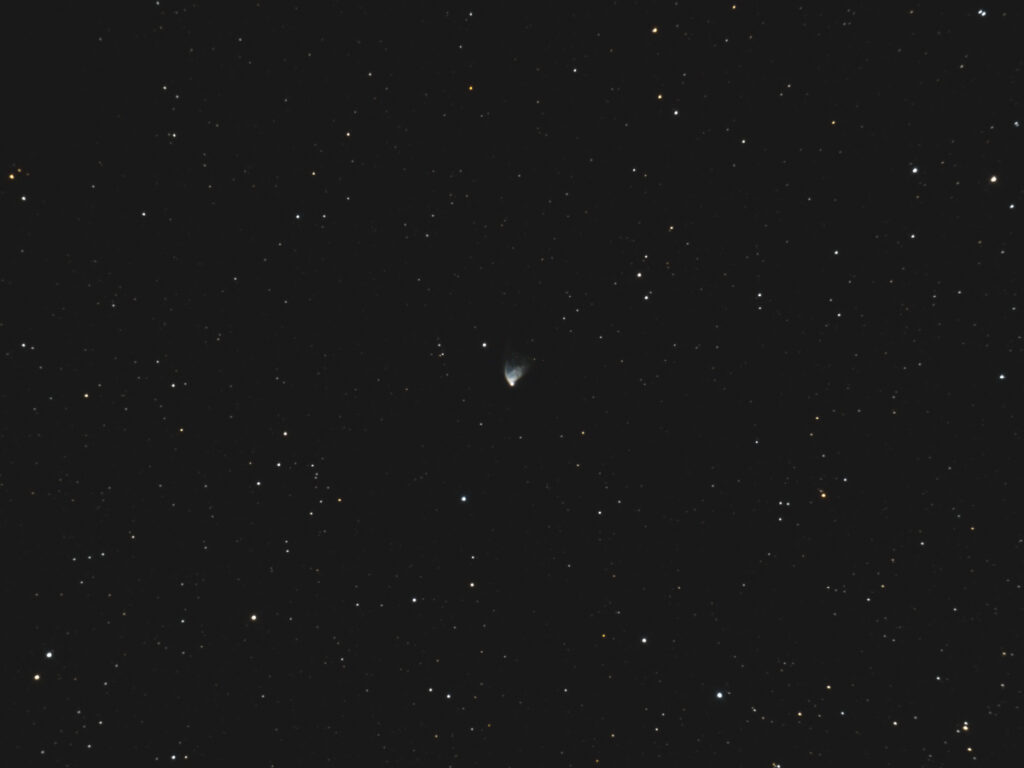
Telescope: Astro-Tech 8” f/8 Ritchey-Chretien, Orion Atlas EQ-G
Camera: QHY 367c Pro, -20C, Baader Mk III MPCC, GSO IR Blocking Filter
Guide scope: Astro-Tech 60mm, ZWO ASI120MM mini, PHD2
Exposure: 6x300sec, gain 2800, offset 50, saved as FITS, dithered every 2 images
Darks: 32, -20C, gain 2800, offset 50, saved as FITS
Flats: 64×0.3sec, Tee shirt flats taken at dusk
Average Light Pollution: Red zone, Bortle 8, poor transparency
Lensed Sky Quality Meter: 18.3
Stacking: Average, 1 sigma clip
White Balance: Nebulosity Automatic
Software: SharpCap Pro, Deep Sky Stacker, Nebulosity, Photoshop
Hubble’s Variable nebula is a small, bright, fan-shaped reflection nebula in Monoceros (the Unicorn). The bright tip of the nebula is not just a star, but a dense nebula hiding a binary star system at its core (R Mon). Clouds of dust are believed to orbit this system, casting shadows up onto the veil causing the overall brightness of the nebula to vary. Time lapse sequences spanning weeks of time show the shadows sweeping across the veil.
This was an interesting image set taken on the evening of February 26th. It was a partly cloudy evening with a lot of haze. I let y camera run until the nebula reached the meridian and sorted through them to find the usable subs. The results is pretty good for only 6 subs! Visually, NGC 2261 appears very much like a beautiful fan-shaped comet. In fact, it appears more like a comet than most faint comets! NGC 2261 is presently high in the east as the sky darkens.
Recent Comments